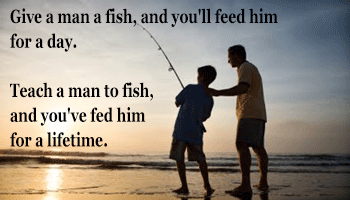Active Therapies – Passive Therapies – Responsibility

Passive therapy is when something is done to you. Passive treatment implies lack of participation from the individual receiving the therapy intervention Examples of passive physical therapies include massage, manipulation, acupuncture, dry needling, traction, ultrasound, electrical nerve stimulation, laser, ice packs, and hot packs. Passive therapy always requires another person to apply the treatment. Passive therapies usually demand more resources in terms of time and money. Passive therapy can foster dependence.
Active therapy occurs when the patient is actively involved in the treatment.
Exercise is the most obvious example of active therapy. At specific points in the healing process rest could be considered appropriate active therapy as it requires the patient to actively choose to not do some activity. Learning to do activity, work, or sport in a different or more ideal way is an example of active therapy. Learning to bend at knees and hips when lifting objects from ground rather than bending at the waist is an example of learning to move better. Self-applying passive therapies could be considered active therapies. Active therapy can foster independence.
Developing a heightened awareness of the subtle changes in the intensity, frequency, and duration of the symptoms allows improved communication with the health care professional in order to determine future direction of treatment. The patient’s role is to actively participate in the treatment process by integrating information and modifying activities with respect to the symptoms. The clinician’s role is assisting the patient in determining the parameters of the symptoms and in recognizing the parameters that exacerbate the symptoms. The clinician is the director, and instructor of the treatment.
Give a man a fish and you feed him for a day. Teach a man to fish and you feed him for a lifetime. Of course it takes more time on the front end to teach someone something, than it does to do it for them. The time invested on the front end is a good long term investment.
There are times when it is better to feed a man a fish. Using passive therapies (heat, massage, manipulation, and medication) can decrease pain enough so that the patient can concentrate enough to learn how to manage the symptoms.
I use the term “Florence Nightingale Syndrome” to describe a healthcare professional or family member who takes care of patient, nursing a patient, does things for the patient. Acting like Florence Nightingale has merit, but it can get in the way of becoming independent. Extended periods of Florence Nightingale approach may lead to codependency. Like the yin and yang there should be a balance and complementary relationship between Florence Nightingale and Tough Love or dependence and independence.
Active treatments require the patient's acknowledgement of responsibility and willingness to accept a role in the rehabilitation process. Without this, it is difficult for active therapies to succeed. Active involvement of the patient has a tremendous impact leading to positive results.
Not all patients are willing or able to accept responsibility for their recovery. Many are stuck in a state of blaming someone or a situation for their injury. As a health care professional when a patient requests and continues to seek passive types of therapies I view this sign as a poor prognosticator for full recovery.
Accepting responsibility is an interesting concept which I believe you can approach from at least two different perspectives, both of which lead to results. (Chatzitheodorou, D 2014; Hooten, WM 2014; Harkmans, EJ 2011;Fritz JM 2007; Koes, BW 2010)
Once an individual has chosen to assume responsibility for a given behavior then they have the power to make another choice. They can choose and commit to a course of action which facilitates change. If an individual is reluctant to choose to be responsible for a given behavior or perspective, they still have the power to choose to be responsible for a solution. Either way choosing to be responsible is a winning proposition. The question and the challenge is how to get individuals to accept responsibility? Again it is all about choice. If you’re not choosing to be responsible for either the cause or a solution, then you are choosing to wallow in the problem.
It can be hard work to teach some individuals to fish, especially if the individual expresses the opinion “there is nothing I can do”, “this is the way I am”, “I have to do that”, “I can’t”, “If only”; to a state where they want to take responsibility to get better. It is much easier to work with someone who feels “I can recover from this injury quickly”, “I want to know how to get better”, “I prefer”, “I will”.
An anonymous author once said that there are really only three kinds of people in this world. There are those who watch things happen; there are those who make things happen and then there are those who wonder what happened. This is a pretty broad brush to paint all of mankind with, but overall my experience has shown this to generally be true. The challenge for health care providers is to help people become less like those that watch and wonder, and more like those that make things happen.
At the end of the day, the truth is this: only you can move you, only you can feel you, only you can live you and only you can change you.
Damien Howell Physical Therapy – 804-647-9499 – Fax: 866-879-8591 At-Home, At Office, At Fitness Facility – I come to you, I do home visits Damien@damienhowellpt.com
